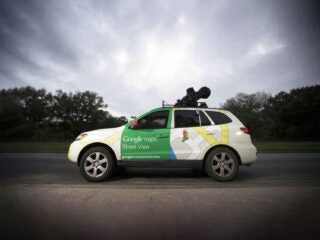- Resources
- Cleaner air and healthier communities: a roadmap
Resources
Cleaner air and healthier communities: a roadmap
Published: November 16, 2019 by EDF Staff
Communities around the world continue to struggle with the health impacts of local air pollution. But because pollution is hard to see, it’s often hard for local leaders to target sources and develop effective solutions.
Environmental Defense Fund released Making the Invisible Visible: A guide for mapping hyperlocal air pollution to drive clean air action that provides advice for cities, counties and other local organizations interested in using hyperlocal air quality data to drive tailored solutions for air pollution.
Scaling solutions to a global challenge
Air pollution in certain places can burden or even shorten residents’ lives:
- Global air pollution is now the biggest environmental risk of early death, responsible for as many as five million premature deaths each year. That’s more than AIDS, tuberculosis and malaria combined.
- Nine out of ten people worldwide breathe polluted air from their first breath to their last.
- Vulnerable populations are impacted the most: children, the elderly, and people with already compromised respiratory systems.
- Air pollution can be up to eight times worse on one end of a city block than another.
Harnessing data to drive action
Conventional air pollution management commonly relies on a few sparsely located monitors. Hyperlocal monitoring can provide a more holistic picture by filling a gap in places where modeled data is not available.
The result? A better understanding of the true exposure and health impacts of air pollution, and uniquely customized solutions.
What the guide has to offer
The guide is organized into three sections:
- Getting Started, examines specific air quality challenges and research tools and introduces how new insights can enable a suite of targeted solutions focused on investigations, emergency response, transportation and traffic, land use, and investments and incentives;
- Nuts & Bolts, provides detailed steps for designing a hyperlocal monitoring network, implementing the network, and analyzing the data; and
- Data to Action, outlines how to evaluate various air quality solutions, build community awareness, and measure progress of policy decision.
The guide also includes case studies on our work with city and community leaders that show how this new kind of data can help design new solutions, build political support for action, increase compliance, and hold polluters accountable.
